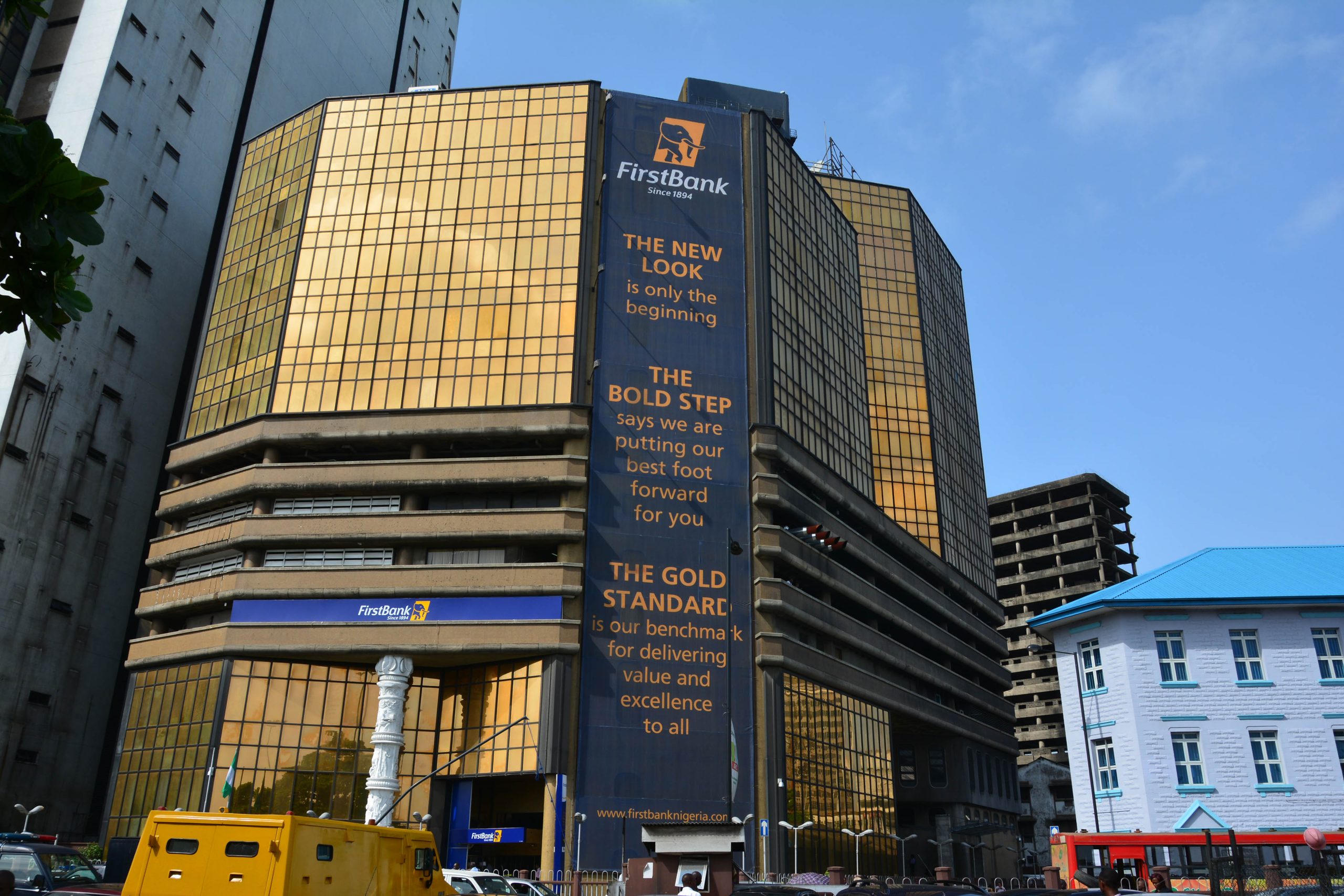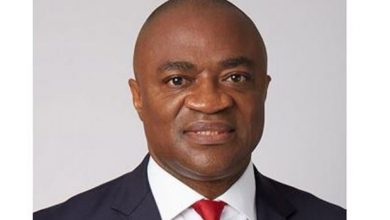NNEKA ONYEALI-IKPE : ANY HOPE FOR FIDELITY BANK?

As Fidelity Bank Gallops into N9B Loss in first quarter 2021
When the change of baton from Nnamdi Okonkwo , former CEO of Fidelity Bank , to ,Mrs Nneka Onyeali-Ikpe was announced ,it was a celebration galore . The reason behind this may not be far to seek . First , she is the first female CEO since the bank was established . Two, her professional pedigree in the banking flaunted to the world particularly to the bank’s investors is reassuring .
However , the excitement appears to be short-lived . After the financial year 2020 that ended with uninspiring results , reservations were raised against the high hope that heralded the announcement of her takeover . . The bank’s major performance metrics in the full financial year 2020 results at both the top and bottom lines moved sharply southward.. From the hopes and glimpses of better returns on the horizon in the first three quarters of that financial year ,the year ended abruptly with a downturn as its profit backtracked. The major spoiler was the N16B impairments registered by the bank . But that performance was a tip of a iceberg . . Surprisingly ,however, the first quarter of 2021,wholly supervised by Nneka also ended in a deep loss of N9billion . Fidelity’s Q1 ’21 results indicate while its PBT grew 54% y/y to N10.1bn, the bank reported an after-tax loss of -NGN9.1bn because of a negative result of N18.7bn in OCI. The negative result of -NGN18.7bn in other comprehensive income (OCI) was due to fair value adjustments made to bond securities following the rise in yields Indeed, these ugly trends raised serious concerns for some observers and stakeholders . It was , indeed, a poor starting point for Onyeali-Ikpe .
The bank is blaming this havoc on the deleterious environment . Without any doubt, the financial sector was stormy and still remains so .The COVID-19 pandemic and its macroeconomic headwinds put a lot of pressure on banking sector . Buffeted by the forces of macroeconomic and institutional headwinds induced by the pandemic only few players were in firm control of their own destinies ; the foundation of the past were shaken and fractured just as the industry terrain changed shape faster than some top management could refashion its basic beliefs and assumptions. Consequently , stagnant growth, declining margins and falling market share became the industry’ s competitive challenges. Fidelity Bank was also a victim .
But is it enough to blame the banks misfortune on the negative impacts of the deleterious environment? .Often too , executives have used supposed institutional disadvantages as an escape clause for poor competitive performance . Though arguably Fidelity Bank is a leading player among tier 2 banks , the bank has remained a threshold player for the fact that its past leaders decided to maintain a path of least resistance .For ambitious leader, this bank has enough potentials to climb to the next level .in the industry . Some analysts are still optimistic that the bank could be turnaround .
There are two options before the leadership of this bank : One , with an ambitious leadership at both the executive and board levels , its equity could be jerked up . At a point in time . speculations from some analysts were that Fidelity would transform to a first tier bank by equity upgrade .But , the bank has not been fortunate to get such an ambitious leader with fire in his belly at the helm of affairs that could imagine such a future and transform the bank . The mantra was and is to shift the blame on inclement institutional factors
But the fact remains that any company that cannot imagine the future wont be around to enjoy it . What occupies the senior managers attention in the bank appears to be restructuring and re engineering or core process redesign. Although the two are legitimate and important tasks but they have more to do with shoring up today businesses than creating a tomorrow industry . These initiatives are no substitute for imaging and creating the future ; they don’t ensure continued success if a company fails to regenerate its strategies ..A company that succeeds at restructuring and re engineering but fails to create the markets of the future will find itself on a treadmill keeping one strong step ahead of the steadily declining margins and profit of yesterday’s businesses. This has been the fate of Fidelity bank . However, The reality on ground is beyond this now . The painful upheavals in this industry in the recent years which reflect the failure of their onetime leaders to keep up with the accelerating pace of industry change have continued to pose dangerous threats to any turnaround agenda without regenerating core strategies ..
The fact remains that when a company is run by managers not leaders ,by maintenance engineer not architect as in most banks in Nigeria including Fidelity ,it impossible or difficult to sustain industry leadership .. It is possible maintain success without any threat to their survival when changes are glacial or extrapolation of the past ; However , when faced with the tides of technological, demographic, and regulatory change and order of magnitude productivity and quality gains made by non-traditional competitors and cataclysmic change in environment , success is eroded or destroyed
Only a leadership with mindset of an architect could upturn the fate of Fidelity Bank . A leader of such spends less time worrying about how to position the firm in existing competitive space and more time creating fundamentally new competitive space . The one in which the goal is to transform industry , not just the organization ;where being incrementally better is not enough Can the present leadership of this bank live up to this expectation ?
The only avenue open to any small bank like Fidelity confronting insurmountable barriers from bigger banks with size advantage is to redraw industry boundaries so that what is now attractive lies outside the former barriers . This could be done by radically shifting the basis for competitive advantage in the industry or creating entirely new industry space ideally suited to one’s own strengths
In either case, whether the company can prosper from its ingenuity will depend on whether it can construct unique and non- imitable competitive advantages. Typically, the existing industry structure works to the disadvantage of everyone save the industry leader and most especially to the disadvantage of small banks that lack foresight and creativity . If a race is to create new competitive space and new forms of competitive advantage ahead of rivals, there is little chance of leadership for a firm who does not understand the competitive advantages or capabilities already constructed by its rivals. Moreever , while understanding the what of competitiveness is a prerequisite for catching up , understanding the why of competitiveness is a prerequisite for getting out in front.
Some analysts believed the Fidelity bank has another option apart from jerking up its equity to join the first tier club . According to them this bank does not need to upgrade its equity to the level of the first tier players . The only realistic and inevitable avenue that is opened to Fidelity Bank to overturn the present industry order is to challenge “accepted practice, redraw segment boundaries, set new price-performance expectations, and reinvent the product or service concept. ;This is what Nneka Onyeali-Ikpe led management is expected to do to avoid being another run of the mill . But ,this option has its own challenge and may be very herculean with the fact that most of the rules of competition in the banking industry and existing market have been established . The price performance tradeoffs customers are willing to make ,the channels that have proved to be most efficient ,the ways products or services can be differentiated ,among other are fairly settled Even with this , this school of thought may not be far from the truth .
Fidelity Bank leadership does not necessarily need to upgrade itself to a first tier bank status but to leverage its current assets and create better values for its investors and other stakeholders .This may not be farfetched . Just as bigness without stretch and leverage is obesity, smallness without stretch and leverage is impotence. It remains unassailable fact that the starting resource positions are poor predictor of future industry’s leadership. .This is because a firm can sit atop mountains of cash and commands legions of talented people and still loose its preeminent position ; likewise, a firm can sometimes outcome enormous resource handicaps and successively scale the height of industry leadership
Fidelity bank, no doubt , has enough potentials and could be more competitive in the hands of better management In terms of assets Fidelity Bank has big potentials to perform better if its management could wake up . It emerged the biggest bank by assets among tier 2 banks with a total assets of N 2,758,I48 b . A puffy assets level could indicate improved strengths in mopping up transactions, including a better position in maturity transformation- the stuff banks are best suited for. It can also mean that the bank has applied some elastic to its wings in the form of more customer touch points, branches and Point of Sale devices. For Fidelity, it was all of these and more.
. Currently ,its asset to equity level at 10.1 x is moderate , allowance for bad loans is sufficient at 127% ,its low risk liabilities at 68 % are made up of primarily low risk sources of funding , loan to assets ratio at 48% , loan to deposit ratio at 78% and level of bad loan at 3.8% are all indicators of its strength and brand equity.. Fidelity Bank’s Balance sheet remained well structured and diversified .
. The question remains, can Nneka Onyeali-Ikpe turn Fidelity Bank round from its current treadmill position ? When she came on board as the CEO in January this year ,her first initiative was to refinance the bank’s 7-Yr N30.0bn Tier II Bonds issued in 2015 at 16.48% p.a. with cheaper 10-Yr N41.2bn Tier II Bonds priced at 8.5% per annum . Although the bank believed and claimed the initiative led to a 61bpts drop in average borrowing cost to 4.5% , yet the same initiative was a major spoiler that led to its loss position after other comprehensive income in the first quarter .
But for Fidelity Bank to show any signal of leadership in the industry or move out of the treadmill certain dramatic steps must be taken particularly by regenerating its core strategies . ., A major problem confronting the management of fidelity bank remains its inability to effectively control its costs .Others include the impairment debacle emanating from ineffective skills in maturity transformation in its core business ; and its trading skills that can deliver to expectations in the financial asset market .
To engender a turnaround and shed a toga of a treadmill player , ,Mrs Nneka Onyeali-Ikpe needs and must fight a three stage distinct , overlapping battles ,The first ,is the battle of foresight and intellectual leadership . This will enables her to gain deeper understanding than competitors of the trends and discontinuities that could be used to transform industry boundaries and create new competitive space .This is the competition to be prescient about the size and shape of tomorrow opportunities .By this the management could conceive fundamentally new type of customer benefits, or to conceive radically new ways of delivering existing customers benefits ..
Moreover , in between the battle for intellectual leadership and the battle for market share is typically a battle to influence the direction of industry development. In the second stage of the competition there is a race to accumulate necessary competencies ,to test and prove out alternate product and service concepts , to attract coalition partners who have critical complementary resources, to construct whatever product or service delivery infrastructure may be required , and get agreement around standards.
If the competition in the first stage is competition to imagine a new opportunity arena, the second stage is competition to actively shape the emergence of that future industry structure to one’s own advantage.
When the competition between alternate technological approaches ,rival product or service concepts and competing channel strategies has largely been settled the battle now shifts to a battle for market share and market position with fairly well defined parameters of value ,price, cost and service The market share is the immediate challenge before Fidelity Bank and this only way to move away from a threshold status to industry leadership status
No doubt , Mrs. Onyeali-Ikpe has what it takes to drive and and turn around the bank . She was formerly the Executive Director, Lagos and South West Directorate of the bank and has been an integral part of management in the last 6 years. She joined the bank in 2015 and spearheaded the transformation of the Directorate, leading it to profitability and sustained its impressive year-on-year growth across key performance metrics.
She is vastly experienced and has spent over 30 years working across various banks including Standard Chartered Bank Plc, Zenith Bank Plc and Citizens International Bank/Enterprise Bank, where she held several management positions in Legal, Treasury, Investment Banking, Retail/Commercial Banking and Corporate Banking.




